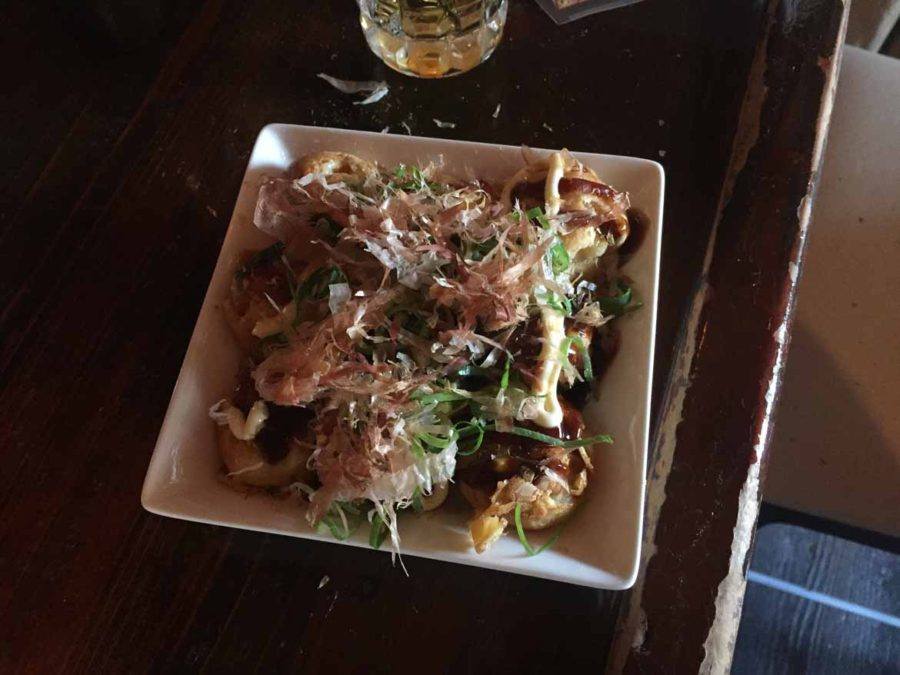Like this post? Help us by sharing it!
Richard Farmer is our very own travel-consultant-turned-tour-leader, blogger extraordinaire and expert in Zen Buddhism. When he’s not turning his hand to those pursuits, however, what does he get up to? We caught up with Richard after a day of culinary adventures in the Kansai region.
In Japan’s Kansai (Kinki) region, of which my current home of Kyoto is a part, takoyaki octopus dumplings are treated with an almost spiritual reverence. Although the popular street food snack, often somewhat titillatingly referred to as ‘octopus balls’, originated in neighbouring Osaka, it’s taken just as seriously here in Kyoto, and can now be found all over Japan. I’ve always been a fan of takoyaki, but I’d never tried cooking them before, so when some friends at my local bar invited me to join them for a takoyaki-making party, I jumped at the chance. There was one proviso… we were quite literally making them from scratch.
First we needed octopus, and for that a fishing trip was required. And a 5:30am start to get there. I’m not quite sure why such an early start was required, as I was pretty sure that the sea would be there all day, but I was assured that we would have a better chance of success the earlier we set out. Our motley crew assembled at an ungodly hour outside our local drinking hole, Bar Robbins Nest, for the drive over to the port city of Amagasaki, which took about an hour.
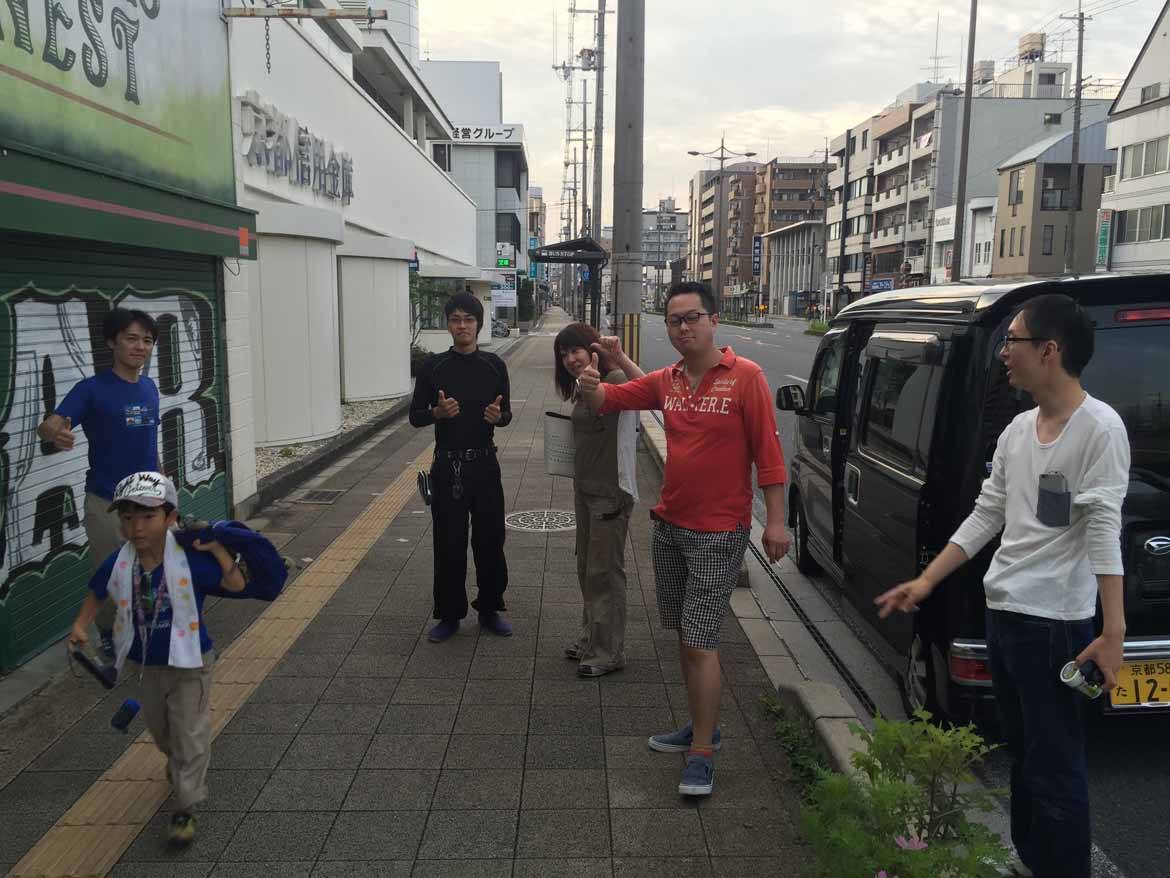
On arrival we donned our lifejackets and while we were waiting for the boat, I had an ice cold beer thrust into my hands. It may have only been 7:30am, but it was already nearly 30 degrees Celsius. How could I say no?
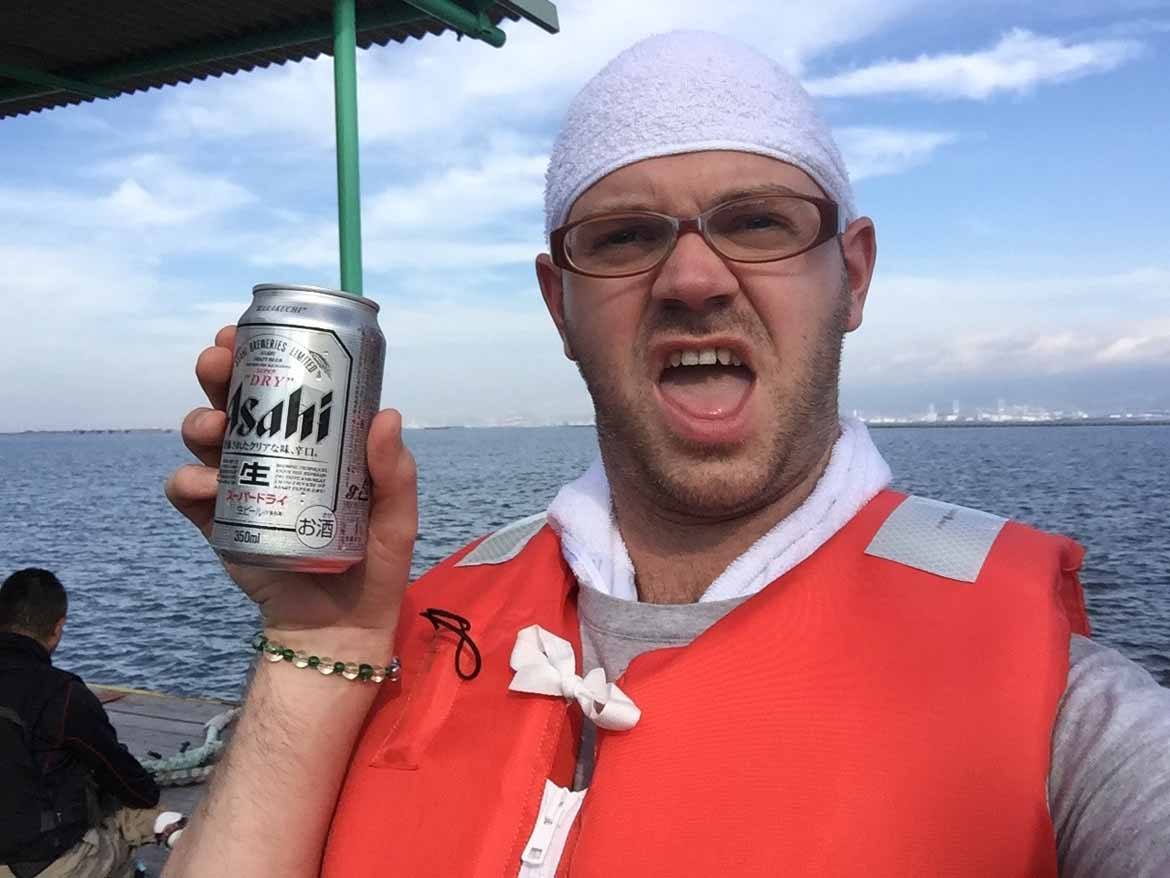
Just as we were finishing up our first beers, the boat pulled up to take us on a short 10-minute trip to our fishing destination.
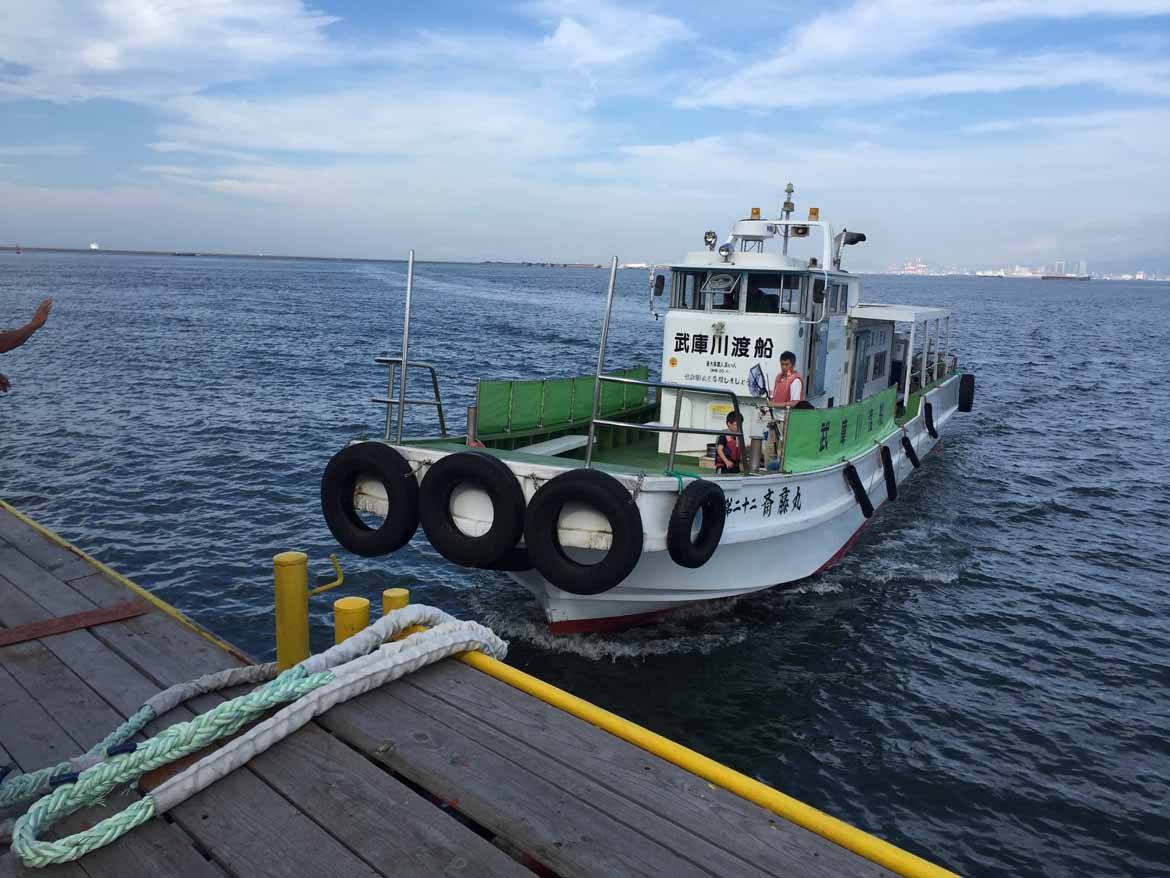
The boat dropped us off at an offshore breakwater, which was to be our hunting ground for the next four hours. Although we were only ten minutes’ boat ride from the mainland, the strip of concrete out in the middle of the bay felt pretty remote. There were no toilets or facilities of any kind, and amazingly for Japan, not even a single drinks vending machine! Anyone who needed to use the bathroom had to wait for the boat to come back every 45 minutes or so, shuttling people to and from the port, and use the toilet on there. There were quite a few people out on the breakwater engaged in the same business as we were – octopus fishing. The views from the breakwater were great, and we could even see Osaka, the birthplace of takoyaki, in the distance.
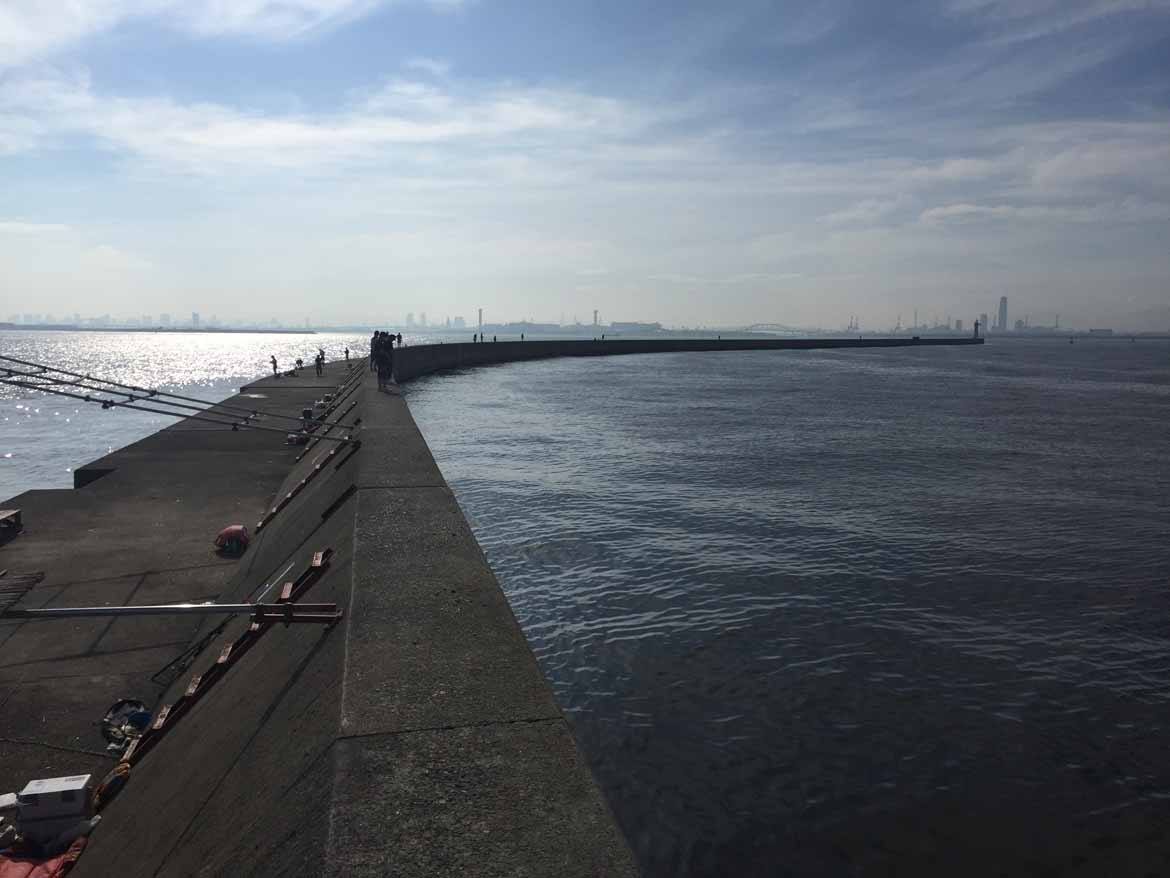
At this point I forgot to take more pictures, as people kept giving me beer, but five hours later we were back on the mainland and heading back to Bar Robbins Nest for the all-important second stage of our schedule – cooking. We didn’t have as successful a haul as we were hoping, having caught only six small octopuses between the seven of us, but it was just enough to feed us all.
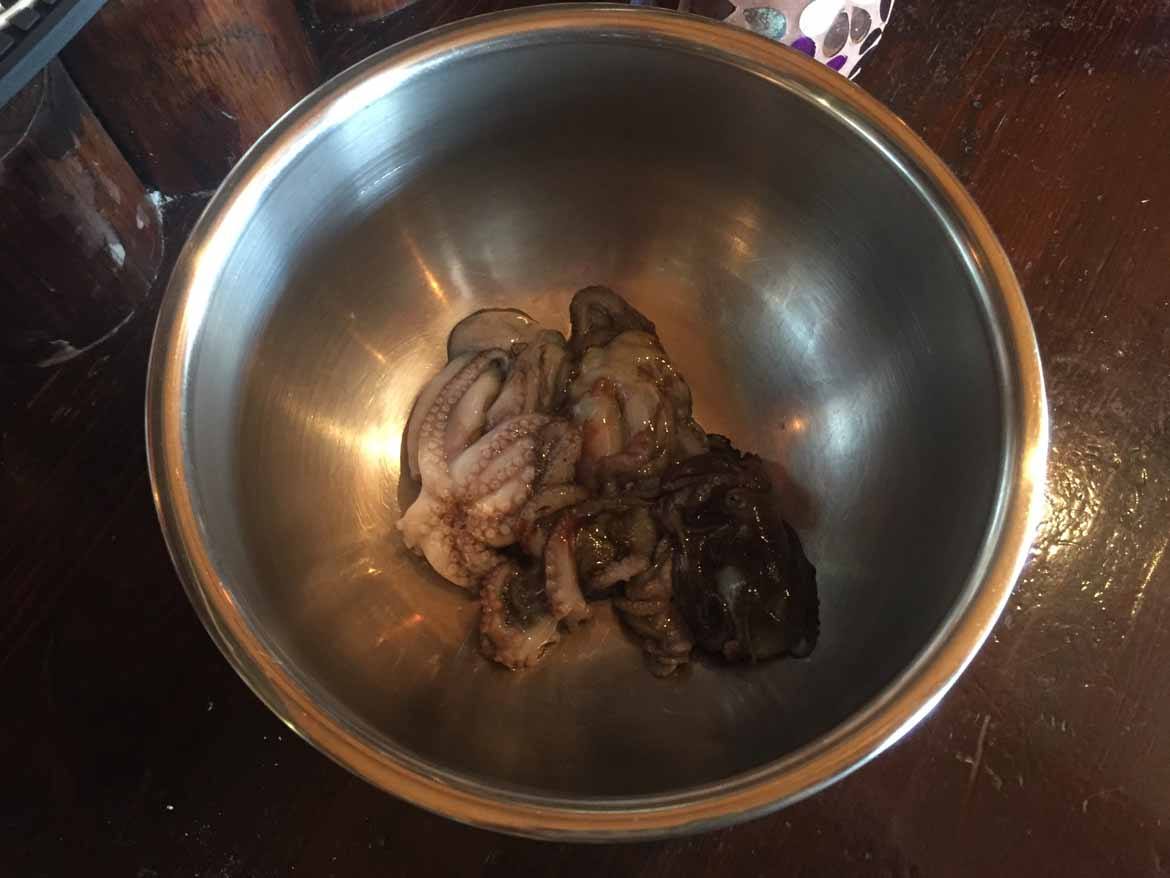
First the octopuses had to be cleaned, which involved a fairly gruesome procedure of taking everything that was inside their heads out of there. After gutting and cleaning we boiled the octopuses whole for five minutes, after which they had turned the familiar reddish purple. We couldn’t resist a little nibble at this stage, and they already tasted great and had a much more pleasant texture then the octopus on sale in supermarkets.
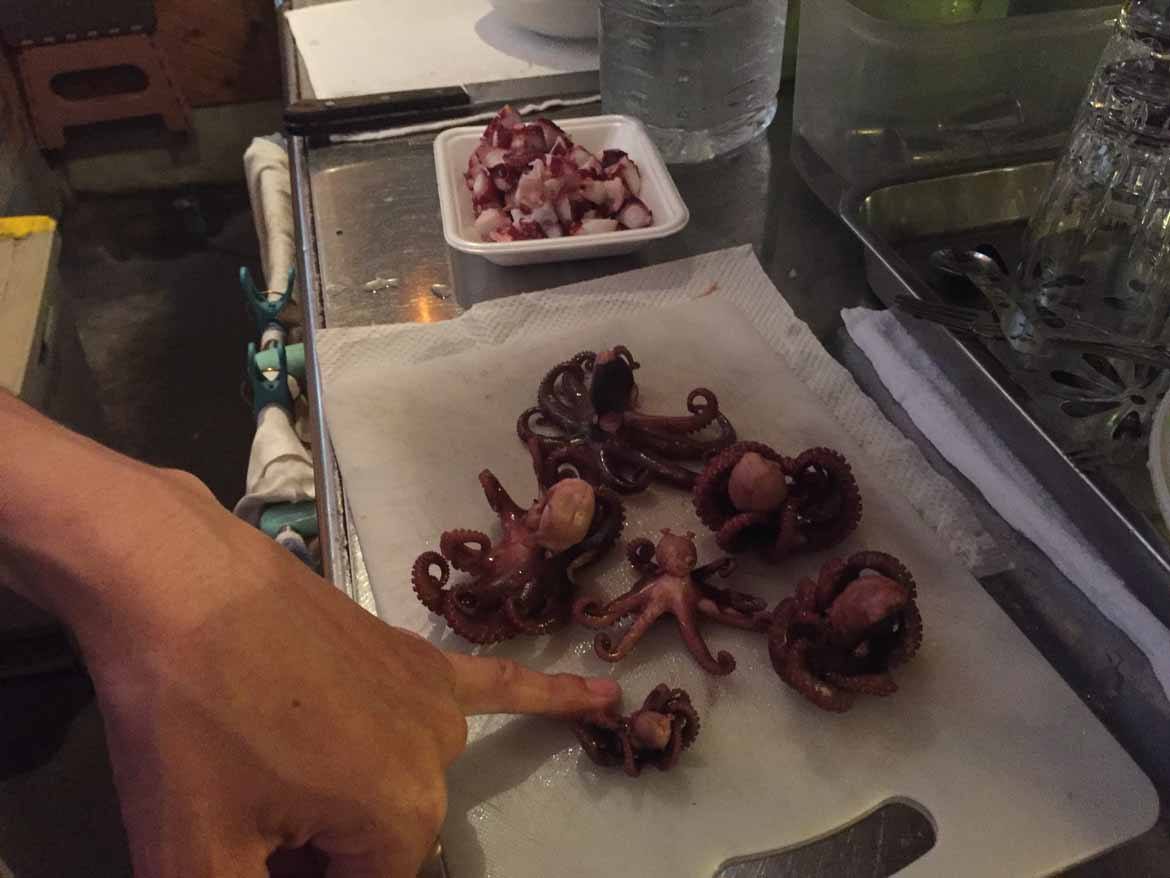
The next step was to prepare the batter, which consists mainly of wheat-flour and egg, deliberately diluted to a very watery consistency with a light dashi fish stock. The watery batter means that as the dumplings cook, they crisp up on the outside, but maintain a soft soupy interior. At this point a piece of specialist equipment is required, a dimpled electric takoyaki hotplate, readily available at electronics stores and department stores in Japan. The dimples are oiled and then the batter is poured into them all, and a small chunk of octopus added to each one.
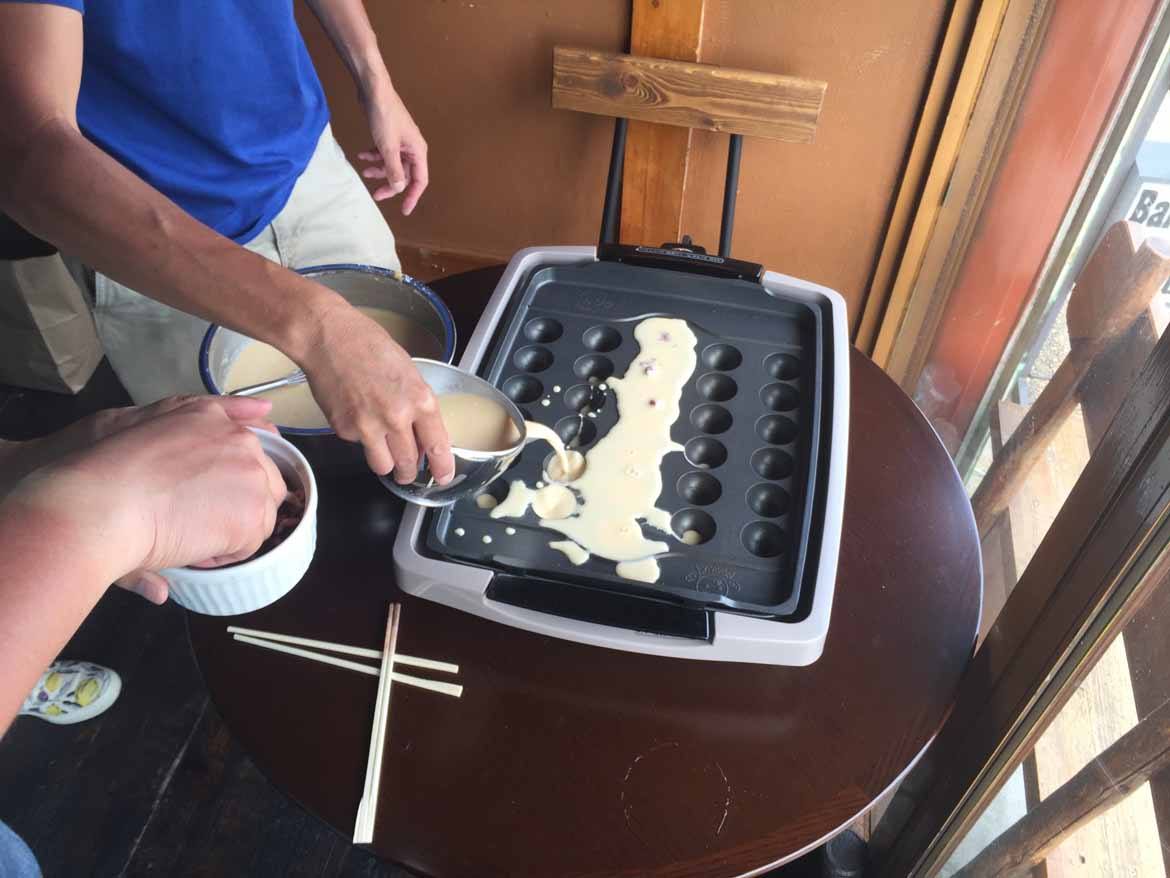
After a short time, the bottom half of the dumplings are cooked, and it’s time for the all important turning of the balls. The professional takoyaki chefs in Osaka use long steel skewers that look like knitting needles, but we made do with chopsticks. It takes a little while to get the hang of turning the balls so that the part that’s still liquid turns towards the bottom of the heated hot-plate dimple, but that’s the fun of a takoyaki party!
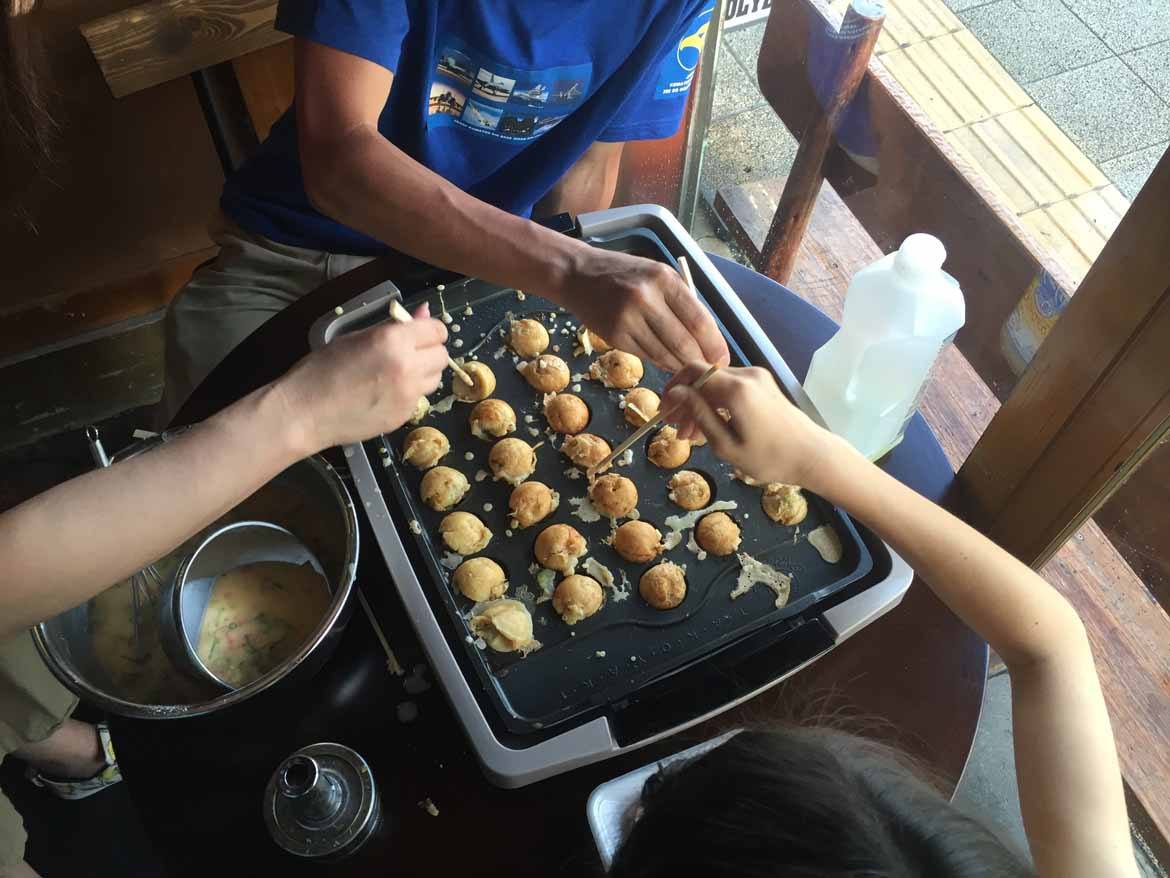
A few more minutes later and the takoyaki are cooked and ready for eating. But first they require a few final touches – decorating with mayonnaise, dried nori seaweed flakes, dried katsuobushi fish flakes, thinly sliced green onions, and a special takoyaki brown sauce.
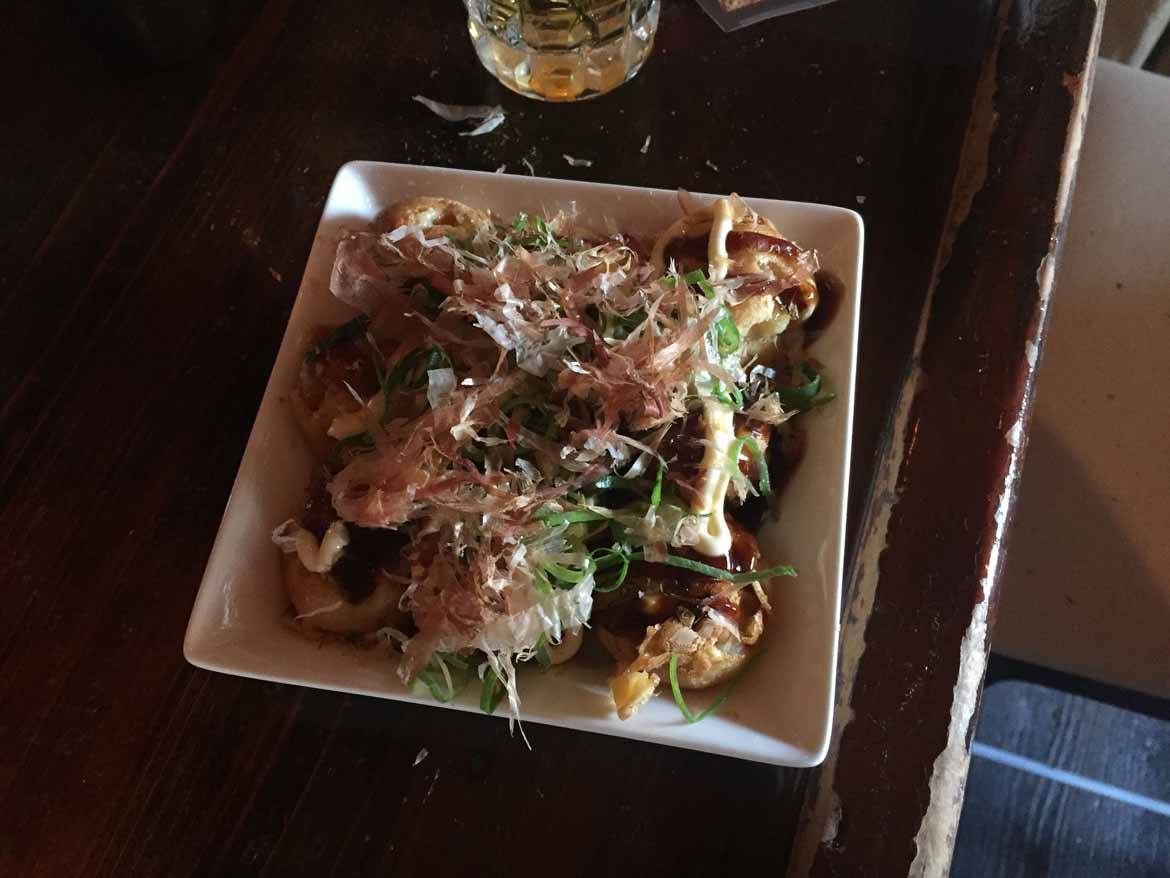
We were all very pleased with the result, and they certainly tasted better thanks to the effort we’d put in to truly make takoyaki from scratch. We’re planning to go fishing again later in the year, and hope to catch a few more next time!
If you would like to try takoyaki in their birthplace of Osaka, but aren’t keen on a 5:30am start, ask your travel consultant about including an Osaka street food tour in your tailored itinerary. I, or one of a number of native Kansai guides, can take you on a whirlwind evening tour of Osaka’s most famous culinary district, sampling takoyaki and a number of other local specialties along the way! Great fun! Click here to start planning now.


